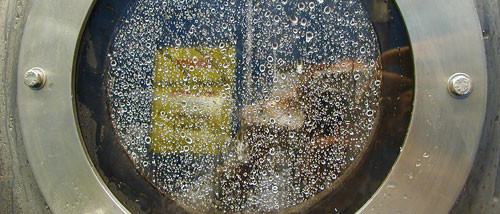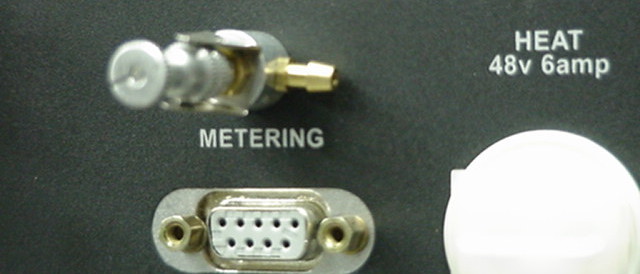Cleaning in Place, is a process that uses the force of water and the dissolving power of very hot water to clean the interior of the freeze dryer after a freeze drying cycle and before SIP. Typically, water for injection at 80 degrees Centigrade is sprayed through fixed and rotating nozzles strategically placed inside of the freeze drying system. Both chamber and condenser are washed. The fixed nozzles spray directly onto shelves, into all penetrations [valves, pressure transducers, vacuum ports, as examples] and the water is allowed to pass once through the system. All of the chamber penetrations slope to allow full drainage of water after CIP.
Prodigious amounts of water are utilized, the pressure is kept constant at about 50-60 psi, and the drains are opened to expel water as it is accumulated. By manifolds or circuits being sequenced in time, the rate of water usage can be limited so as to keep up with or not overburden the supply of WFI if that is an issue. Typical production systems utilize 50 GPM of water for about 15 minutes duration for each “bank” or manifold section. The shelves in the freeze dryer are cycled up and downward during the process so that the water cascades over the upper and lower shelf surfaces sufficiently to remove product residues [as validated by a cleaning validation process] to acceptable limits so that residual product from the previous cycle cannot be passed on to the next cycle. The effect of SIP with steam also cleans the chamber interior, and the combination of cascading water and SIP with steam is sufficient to allow products to be removed between batches. In special cases, the CIP system may incorporate strong bases to render potent compounds to be inactivated before SIP. Both building drains and chamber and condenser drains must be sized adequately to prevent effluent water from backing up in the system. ��This is a particularly important design criterion for incorporation in your URS. In many instances, a large tank is utilized to accumulate WFI and then the contents are sometimes recirculated with a final rinse of pure WFI to ensure acceptable limits of residue to be achieved. Sometimes the condenser can be utilized as the CIP storage system, and water from the condenser can be recirculated through the chamber to help reduce the consumption of expensive WFI cleaning agent. To effectively remove residual water after CIP it is usually followed by SIP which sufficiently heats all interior surfaces to allow complete drying after CIP and SIP are completed. Usually there is a remainder of moisture left after CIP that is almost impossible to remove just be evacuation of the system without following with SIP and steam. This can be a design and process problem if SIP is done with hydrogen peroxide instead of steam. Hydrogen peroxide does not penetrate to surfaces beneath water, therefore increasing risk, and increasing evacuation times to achieve dryness in all areas of the freeze dryer.




